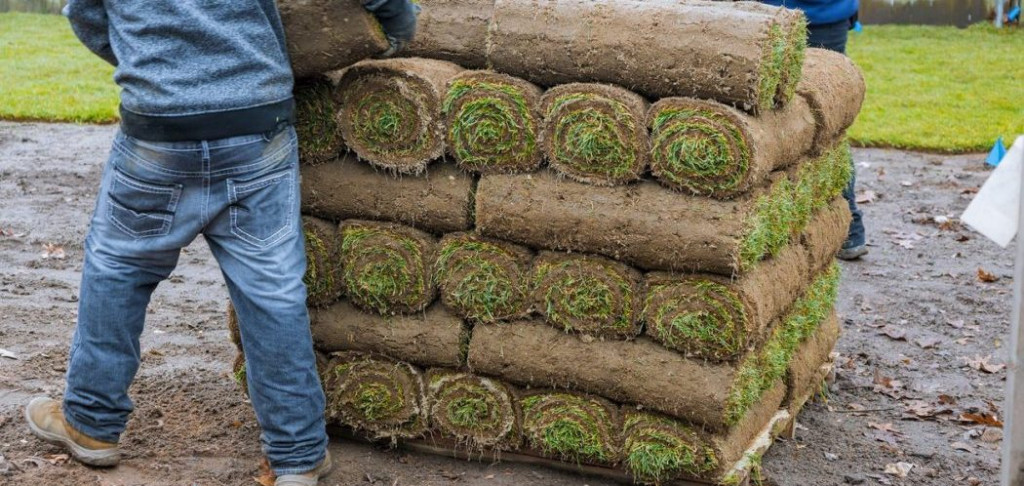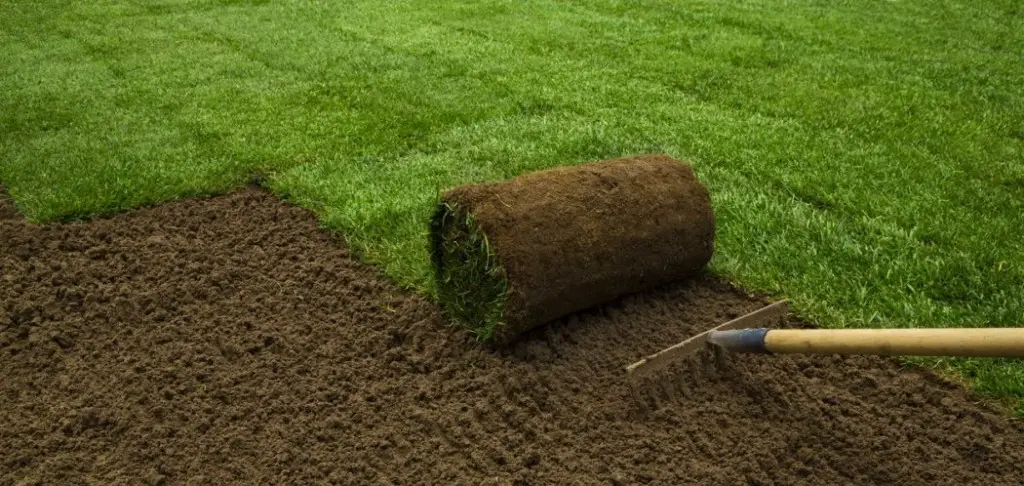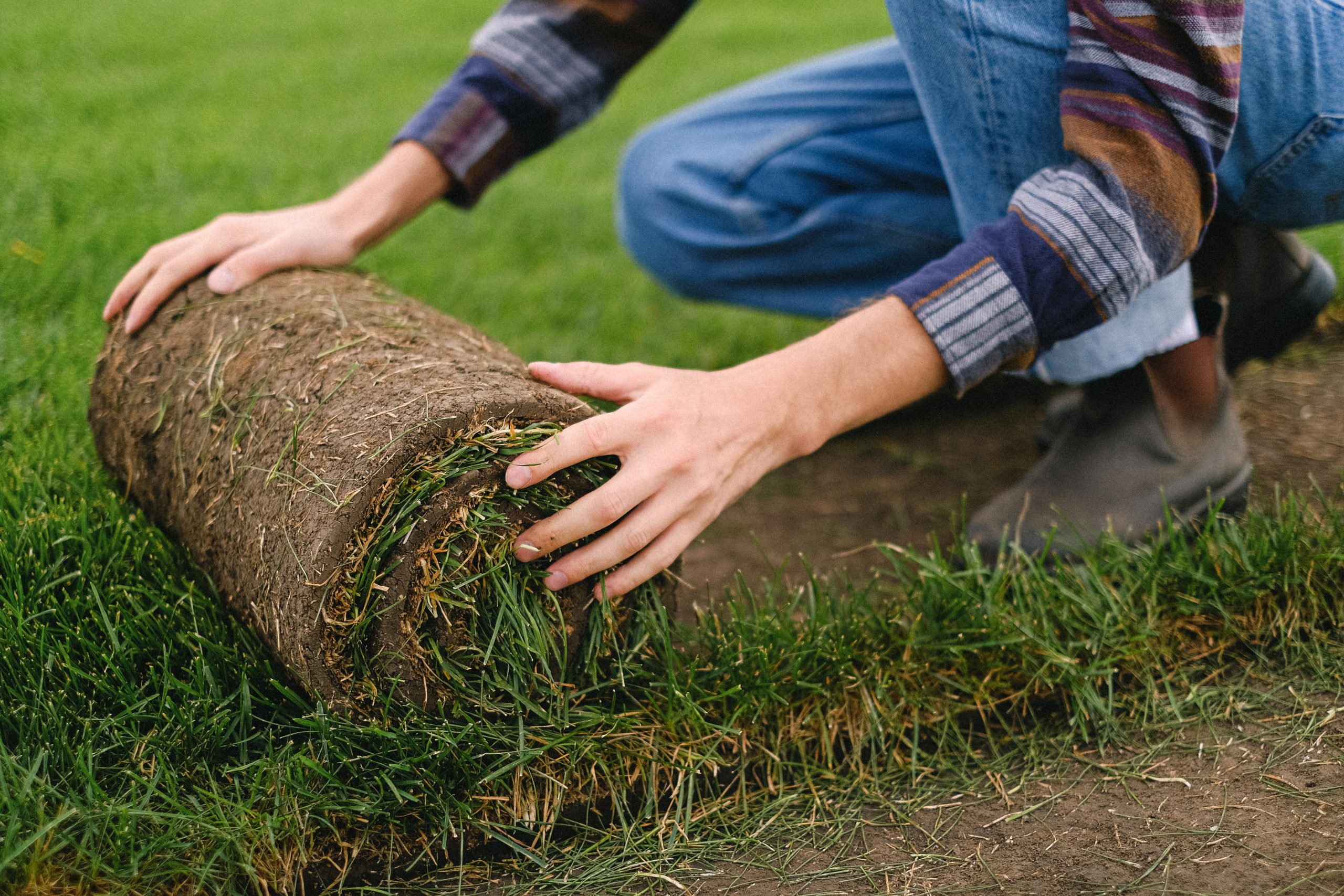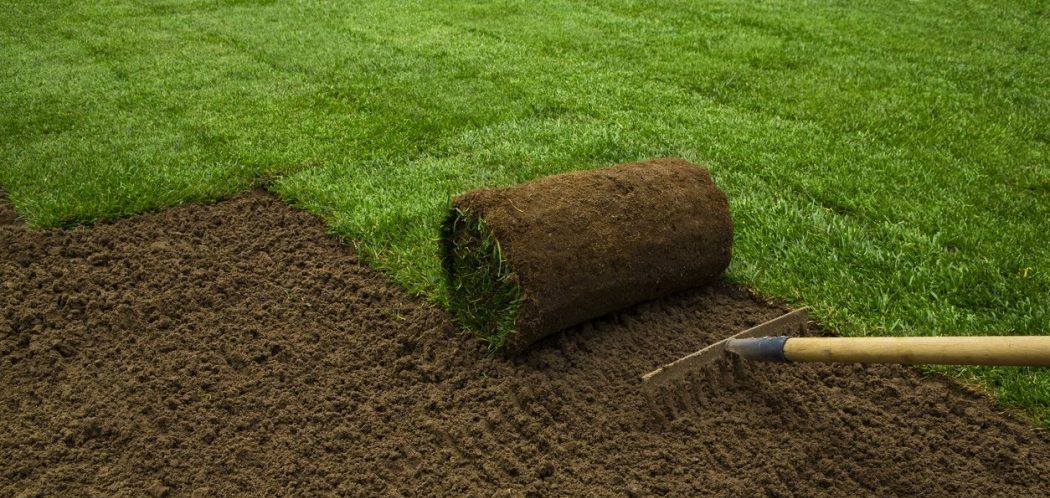Few landscaping projects transform a property as dramatically and quickly as installing lush new sod. Imagine saying farewell to patchy dirt and weeds infesting your yard and welcoming uniformed green grass in their place. Sod offers immediate curb appeal, usable lawn space, environmental benefits like cleaner air, and can boost a home’s value.
However, while sod may provide instant gratification for bare, sad looking yards, it comes at a cost. Between thorough preparation beforehand, the sod itself, professional installation services, maintenance expenses, and potential repairs down the line, costs add up. Knowing what to realistically budget helps avoid financial surprises.
In this detailed guide, we’ll walk through all facets of the costs of installing sod, including:
- Vital lawn preparation work needed before laying the first sod rolls
- Calculating sod quantities needed and pricing for materials, delivery, and installation
- Initial watering requirements and recurring maintenance expenses
- Factors that influence cost per square foot like site complexity, soil needs, and warranty inclusions
- Accounting for potential long-term sod repairs or section replacements
- Tips for keeping your sod installation project affordable
Understanding the full scope of expenses – both the upfront investment and ongoing care – allows planning a dream sod lawn while staying on budget.
On average, the total cost to install sod ranges from $0.50 – $1.00 per square foot depending on the quality, site conditions, hiring professional services or doing it yourself, and other factors. With the typical lawn requiring 1,000 – 5,000 sq ft of sod, expect total installation costs from $500 – $5,000+ for materials, labor, site prep and maintenance.
Here is a detailed table breaking down the various costs associated with installing sod:
| Category | Item | Cost Range |
| Lawn Preparation | Soil testing (DIY kit) | $10 – $30 |
| Soil testing (professional lab) | $50 – $150 | |
| Soil amendments (per cubic yard) – Compost | $25 – $40 | |
| – Sand | $20 – $40 | |
| – Topsoil/loam | $30 – $50 | |
| Tilling (rental per day) | $40 – $80 | |
| Grading (professional per hour) | $50 – $100 | |
| Sod Purchase | Sod (per square foot) | $0.40 – $1.00 |
| Delivery for small local order | $50 – $100 | |
| Delivery for large out-of-state order | $150 – $300+ | |
| Additional delivery fees | $25 – $50 | |
| Installation | DIY rental equipment (per day) | $30 – $100 |
| Professional install (per sq ft) – basic yard | $0.75 – $1.25 | |
| – complex landscape | $1.50 – $2.50 | |
| Initial Care | Extra watering first 2 weeks | Highly variable |
| Maintenance | Fertilizer (per application) | $20 – $70 |
| Mowing – rental/services | Highly variable | |
| Pest control (per application) | $40 – $100 | |
| Potential Long-Term Costs | Repairs/replacement (per sq ft) | $0.50 – $1.50 |
| Irrigation system | $2,000 – $6,000 |

Lawn Preparation: Don’t Skip These Critical First Investments
Eager as you may be to see sod rolls laid, the installation process actually begins before delivery day. To give your new sod the best possible chance at thriving, invest time and care into detailed groundwork before installation.
Soil Testing and Analysis
Soil testing provides invaluable insights into the current pH balance, nutrient and mineral content, drainage capacities, and other characteristics of your yard’s dirt. This allows correcting any deficiencies or imbalances prior to laying sod.
For basic pH and NPK values, home soil test kits cost around $10-$30. Or you can utilize professional lab analysis for $50-$150 to evaluate microbial activity, organic matter percentages, cation exchange capacity, salinity, and more parameters.
Taking this important first step helps avoid wasting money on sod that’s doomed to struggle or fail in poorly conditioned soil. Build the foundation for sod success starting from the ground up.
Soil Amendments to Optimize for Grass Growth
Once you understand your soil’s strengths and weaknesses from testing, incorporate any amendments needed to optimize fertility and texture for healthy sod establishment.
- Compost introduces beneficial organic matter to improve moisture retention, drainage, aeration, and microbial activity in the soil. Bulk compost typically runs $25-$40 per cubic yard depending on inputs like manure, food waste, leaves, etc. Incorporate 1-3 inches across all sod installation areas.
- Sand provides drainage and aeration benefits to compacted clay soils. Sand costs around $20-$40 per ton, with the ideal amount to till in ranging from 20-50% by volume depending on current soil composition.
- Topsoil or loam enriches thin, nutrient-deficient soils with an ideal blend for growing grass. Topsoil runs $30-$50 per cubic yard. Spread 1-2 inches prior to laying sod for optimal fertility.
Taking the time to correct any soil issues beforehand means your sod starts thriving immediately instead of struggling to overcome challenges like poor drainage, infertility, or extreme pH.
Grading and Tilling for Proper Drainage
For effective drainage across the entire sod installation area, thoroughly rake and till the top 4-6 inches of soil. This levels the surface while creating loose, weed-free soil for sod roots to quickly penetrate.
Renting a gas-powered tiller typically costs around $40-$80 per day. Or you can hire professional land grading services to properly shape and contour the landscape for optimal drainage at $50-$100 per hour.
Finish prepping by clearing any remaining debris like rocks, roots, or building materials that could impede direct sod-to-soil contact.
With the “blank canvas” of your lawn ready, it’s time to focus on selecting and purchasing the sod itself…

Sod Materials, Delivery, and Installation Costs
The fun part lies in choosing your ideal grass type and texture to achieve your dream lawn. But naturally, quality sod comes at a price depending on many factors.
Sod Purchase Price Per Square Foot
The biggest upfront investment when installing sod lies in purchasing the turfgrass itself. Sod prices typically range from $0.40 on the very low end up to $1.00 per square foot on the high end based on:
- Grass species and cultivar – The type of turfgrass chosen, with more specialized or drought/disease resistant varieties commanding higher prices than standard grass.
- Sod thickness – Thicker sod with more underlying soil is pricier but generally establishes better as roots have more room to develop before reaching subsoil. Many suppliers offer 0.5-, 1- or 1.5-inch thickness options.
- Sod quality – Superior sod grown under ideal conditions with expert maintenance and care commands higher prices than mass-produced commercial varieties. Ask about the source sod farm and growing methods.
- Supplier proximity – Local sod prices tend to be lower for you but higher for suppliers distant from your area who must factor in transportation costs. Shop both options.
For the average residential lawn requiring anywhere from 1,000-5,000 square feet of sod, the cost of the materials alone quickly becomes a hefty investment, often ranging from $500 up to $5,000+ for high quality selections installed across larger properties.
Delivery, Transportation and Logistics Fees
The cost of delivering harvested sod from farm to your home tacks on another layer of expenses, again influenced primarily by distance:
- Hyper-local supplier – Sod farms located within 50 miles of your property may offer “free” local delivery for smaller orders included with purchase price. This typically uses smaller 24’ box trucks suitable for metropolitan routes.
- Long distance deliveries – Suppliers located hours away necessitate semi-trucks and trailers for larger pallets of sod, often running $150-$300 each way for long distance transport, fuel and specialized driving services.
- Additional handling fees – Many sod farms also tack on supplemental delivery preparation fees averaging $25-$50 per pallet load to account for loading, pallet rental, strapping/wrapping to secure on trucks, and farm personnel time investments.
Shop around with both local and regional sod farm suppliers, get quotes upfront, and carefully compare delivery policies. Transport and logistics fees can vary widely between vendors based on distance from the source farm, order size, and individual policies.
DIY Sod Installation
By renting the necessary equipment and providing your own labor, ambitious DIYers can cut installation costs substantially compared to hiring the work out. This requires renting specialty tools like:
- Sod rollers – $30-$50 per day
- Power sod cutters – $50-$100 per day
- Machetes/sod knives – $10-$20
- Shovels, rakes, wheelbarrows
Factor in your personal time investment, physical labor, and potential sod waste or mistakes caused by lack of professional experience when comparing DIY versus pro installation costs.
Professional Sod Installation Services
Opting for a professional sod installation company guarantees expertise laying sod quickly, correctly, and avoiding many novice mistakes. This convenience comes at a price, but also saves your personal time and heavy labor.
Expect to pay in the range of:
- Basic flat yards – $0.75-$1.25 per sq. ft. for straightforward sod jobs on simple, level topography with minimal obstacles like trees and structures.
- Complex landscape installations – $1.50-$2.50 per sq. ft. for multi-level or hillside yards, obstructed sites, long/narrow spaces, or terrains requiring extensive planning and precise seaming and contouring.
For full-service convenience without the back-breaking work under summer heat, professional companies may offer worthwhile peace of mind. Just be sure to get multiple bids and verify the scope of services.

Post-Installation: Recurring Water, Maintenance and Care Costs
Congratulations, your sod is laid! But don’t put away your wallet just yet – newly installed living sod requires careful establishment watering and maintenance for long-term success. These recurring expenses quickly add up.
Water Requirements for New Sod
Freshly laid sod initially needs substantial irrigation applied consistently – up to 2 inches total daily – for the first two weeks until well rooted. This can easily double the cost of your typical water bill during the all-important establishment phase.
Seasonally high water rates in the peak of summer only exacerbate the costs if you’re installing sod during hot, dry months with irrigation bans.
Ideally time installations for spring or fall when temperatures are moderate and natural rainfall more abundant to minimize the water-related expenses.
Ongoing Lawn Maintenance Costs
From mowing and watering to fertilization and more, ongoing maintenance of your sod represents a regular investment:
- Fertilizer – New sod requires more frequent feeding, averaging 3-4 timed applications annually at $20-$70 per treatment depending on product. Establish a seasonal feeding program to maintain health.
- Mowing – If you don’t already own a mower, factor in costs of rental fees, fuel, blade maintenance, etc. Or budget for weekly to bi-weekly professional mowing service rates.
- Pest and disease control – Preventative fungicide and insecticide applications may be required at $40-$100 per treatment for commercial grade products.
Proper new sod care including routine watering, mowing, fertilizing, and monitoring pests is non-negotiable for your investment to thrive and provide lasting value. Budget accordingly.
Variables That Can Impact Costs for Sod Installation Projects
When estimating the total expenses of a planned sod installation, there are many additional factors beyond basic square footage that can influence real-world costs:
Site Size and Layout Complexity
Larger yet relatively flat, wide open yard spaces require less intensive labor, planning, and piecing together than intricate multi-level landscaping, narrow confined yards blocked by trees/structures, drainage considerations, etc. Complexity means higher costs.
Site Accessibility and Equipment Needs
Sod pallet trucks and installation equipment need delivered to the site and used on-site during install. Limited access via small gates, lack of driveway space, or need for small equipment suitable for tight residential spaces can hamper transport and require extra labor accommodations.
Soil Fertility and Drainage Considerations
If soil testing reveals drainage challenges, high clay content, or very poor fertility and nutrient levels, substantial augments and regrading may be required before quality sod can thrive in the long-term. Proper site conditions mean higher upfront costs but are vital.
Warranty Packages
Many professional sod installation companies include limited material warranties, while premium packages may offer expanded coverage on labor, automatic replacement, etc. if using their end-to-end services. Read policies closely and understand covered terms.
Long-Term Sod Investments to Factor into Budgets
Costs for your new sod won’t disappear as soon as installation day wraps up. Be prepared for potential long-term investments such as:
Repairs, Replacements, and Overseeding
If certain sections of sod fail to take root, decline over time, or go dormant, replacing patches or dormant seeding costs around $0.50-$1.50 per square foot including labor. Prepare a 5-10% contingency fund or set budget for overseeding annually as preventative lawn thickening.
Permanent Irrigation Systems
Over time, installing permanent in-ground irrigation systems can provide convenience, optimal coverage, and precise watering control. This upgrade costs around $2,000-$6,000 depending on system scale, components, and complexity.
While not guaranteed necessary expenses, anticipate some degree of long-term sod repair and improvement costs beyond just basic seasonal maintenance.
Cost-Saving Tips for Your Sod Installation Project
Ready to sod your yard but want to ease the financial hit of the project? Employ these tips:
Seek Off-Season Discounts
Ask area suppliers about discounted rates they may offer during cooler months when demand is slower. Installing in early spring or late fall can net 10-25% savings on materials.
Join Community Sod Buying Groups
In communities, neighborhoods, churches, etc. collaborate on coordinating bulk discounted sod purchase direct from regional farms. Greater combined yardage means substantial savings per square foot.
Maintain Diligently
Reduce future repair expenses by keeping your new sod healthy through proper care including routine watering, mowing, fertilizing, and pest management. Prevention over patching!
Phase Yard Sections Gradually
Rather than tackling entire yard sodding in one huge effort, break the project into phases over years starting with front yards or high-traffic entertaining zones first as budget allows.
What Does Sod Really Cost? Key Considerations Evaluating the Investment
When weighing aesthetics, enjoyment, home value impacts, and other sod benefits against costs, consider the lifetime return, not just the upfront price. Properly cared for, premium-grade sod can provide a flawless lawn for 15-25+ years for long-term ROI.
With that perspective, the real cost of professionally installing high-end sod lands around:
- $2.50 – $3.50 per sq. ft. for premium materials, experienced installation on complex residential lots, and incorporating critical soil preparation and post-laying care.
As with most landscaping investments, proper planning, sourcing quality materials suited for site conditions, professional execution, and attentive ongoing maintenance ensure lasting outcomes and value for money spent.
While sod sticker shock is real, for many homeowners the instant gratification and years of satisfaction a lush new lawn provides outweighs the costs when budgeted wisely. Do your homework and invest in long-term sod success!
What’s been your experience with managing sod installation costs and budgeting for a project? Feel free to share any tips or questions below to help other readers!






